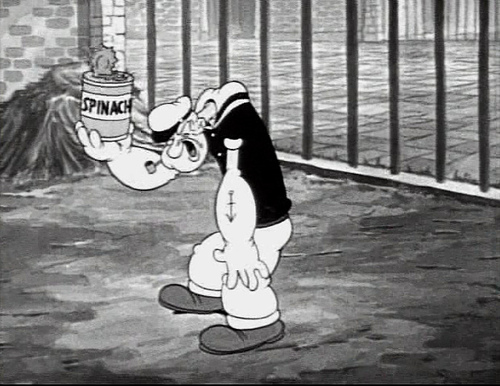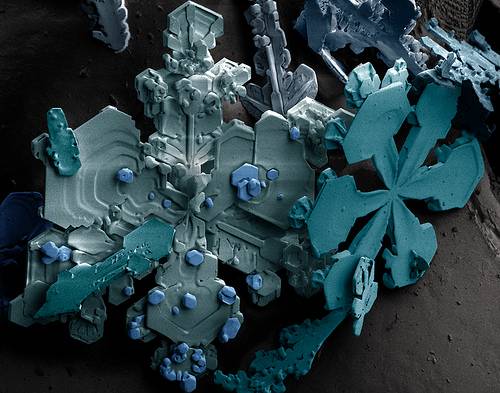
During the Depression, spinach farmers in Crystal City, Texas, erected a statue of Popeye — the cartoon character almost singlehandedly saved the spinach industry.

During the Depression, spinach farmers in Crystal City, Texas, erected a statue of Popeye — the cartoon character almost singlehandedly saved the spinach industry.
The heaviest newspaper ever printed was the New York Times of Sunday, Sept. 14, 1987.
At 1,612 pages, it weighed more than 12 pounds.
Opening excerpt from “Cadaeic Cadenza,” a short story written in 1996 by Mike Keith:
One
A Poem: A Raven
Midnights so dreary, tired and weary,
Silently pondering volumes extolling all by-now obsolete lore.
During my rather long nap — the weirdest tap!
An ominous vibrating sound disturbing my chamber’s antedoor.
“This,” I whispered quietly, “I ignore.” …
If you write out the number of letters in each word, they form the first 3,834 digits of pi.
Christopher Lee has 211 screen credits, more than any other living actor. He’s performed in English, French, Canadian, German, Russian, Norwegian, Swedish, Italian, Pakistani, Spanish, Japanese, American, Australian and New Zealand productions.
If that’s not impressive enough, he’s also 6 foot 5 and a direct descendent of Charlemagne.
What are these?

They’re snow crystals, magnified by a scanning electron microscope.
“Servants are a necessary evil. He who shall contrive to obviate their necessity, or remove their inconveniences, will render to human comfort a greater benefit than has yet been conferred by all the useful-knowledge societies of the age. They are domestic spies, who continually embarrass the intercourse of the members of a family, or possess themselves of private information that renders their presence hateful, and their absence dangerous. It is a rare thing to see persons who are not controlled by their servants. Theirs, too, is not the only kitchen cabinet which begins by serving and ends by ruling.”
— From The Laws of Etiquette, by “A Gentleman,” 1836
petrichor
n. pleasant smell accompanying the first rain after a dry spell

It’s only a happy accident that our moon “fits” over the sun’s disc during a solar eclipse. The sun is 400 times the diameter of the moon, but it’s nearly 400 times farther from Earth, so to us the two have almost exactly the same angular size.
From Anomalies and Curiosities of Medicine by George M. Gould and Walter L. Pyle, 1896:
A convict at Brest put up his rectum a box of tools. Symptoms of vomiting, meteorism, etc., began, and became more violent until the seventh day, when he died.
After death, there was found in the transverse colon, a cylindric or conic box, made of sheet iron, covered with skin to protect the rectum and, doubtless, to aid expulsion. It was six inches long and five inches broad and weighed 22 ounces.
It contained a piece of gunbarrel four inches long, a mother-screw steel, a screw-driver, a saw of steel for cutting wood four inches long, another saw for cutting metal, a boring syringe, a prismatic file, a half-franc piece and four one-franc pieces tied together with thread, a piece of thread, and a piece of tallow, the latter presumably for greasing the instruments.
“On investigation it was found that these conic cases were of common use, and were always thrust up the rectum base first,” the authors explain. “In excitement this prisoner had pushed the conic end up first, thus rendering expulsion almost impossible.”

People were willing to believe in a chess-playing automaton as early as 1769. That’s when Wolfgang von Kempelen unveiled “The Turk,” a cloaked and turbaned robot that played over a maplewood cabinet full of clockwork. The contraption toured the courts of Europe, where it beat Benjamin Franklin and Charles Babbage, among many others.
The machine’s secret emerged only in 1854, after the automaton was destroyed in the great Philadelphia fire. The cabinet had contained a human player who followed the game by watching magnets on the board’s underside. He made his moves on a secondary board that transmitted them to the Turk.
Still, it played some good games. Here it beats the crap out of Napoleon Bonaparte, who has White:
1. e4 e5 2. Qf3 Nc6 3. Bc4 Nf6 4. Ne2 Bc5 5. a3 d6 6. O-O Bg4 7. Qd3 Nh5 8. h3 Bxe2 9. Qxe2 Nf4 10. Qe1 Nd4 11. Bb3 Nxh3+ 12. Kh2 Qh4 13. g3 Nf3+ 14. Kg2 Nxe1+ 15. Rxe1 Qg4 16. d3 Bxf2 17. Rh1 Qxg3+ 18. Kf1 Bd4 19. Ke2 Qg2+ 20. Kd1 Qxh1+ 21. Kd2 Qg2+ 22. Ke1 Ng1 23. Nc3 Bxc3+ 24. bxc3 Qe2# 0-1